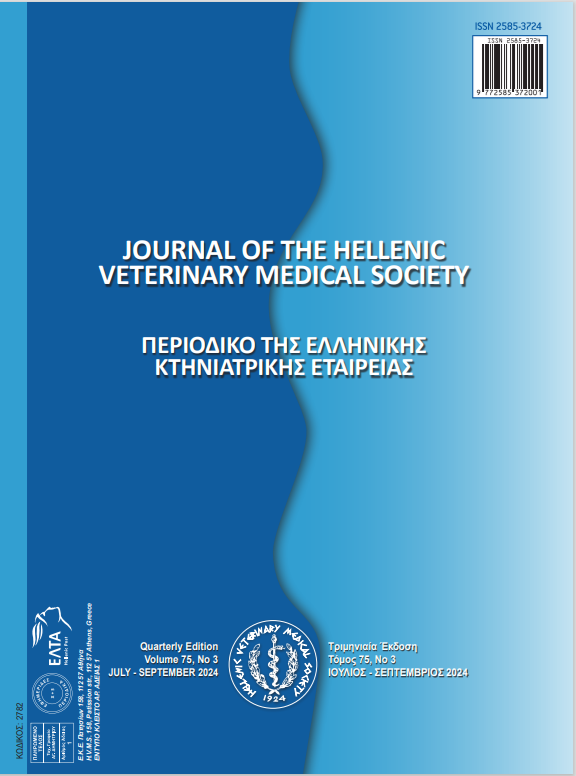A retrospective study on the isolated strains of Salmonella in poultry

Abstract
Poultry represent an important global reservoir of Salmonella. Poultry salmonellosis results in great economic losses, and some serovars also have zoonotic potential. Some poultry can be infected with Salmonella without showing clinical signs of the disease, but is, nevertheless, a significant source of spread of the infection. Clinical symptoms range from digestive problems (white diarrhea, malabsorption) to bacteremia and death. The aim of this study was to retrospectively show the presence of bacteria Salmonella enterica subspecies enterica of various serovars in poultry in the Belgrade epizootiological area in a period of six years (2014-2019). A total of 4580 samples were examined including: incubated eggs, dead chickens, broiler feces and laying hens with total of 207 positive samples. Salmonella was isolated by standard microbiological methods followed by serological typing. In the examined period, the prevalence of poultry salmonella was 4.52%. The highest number of examined samples was recorded in 2017 (879), and positive in 2018 (65), while the lowest prevalence was recorded during year 2016 with 7 positive samples. Of all isolated and serotyped Salmonella, the most commonly isolated serovar was S. Enteritidis (65.28%), followed by S. Infantis (21.30%), S. Mbandaka (6.02%), S. Senftenberg (3.24%), S. Typhimurium (1.85%), S. Agona (0.93%), S. Taksony (0.93%), and the least common is S. Tshiongwe (0.46%). The first report of serovars : S. Agona, S. Taksony and S. Tshiongwe have been during 2018. The highest number of positive specimens was found in laying hens faces (116 of 921 tested), broiler faces (73 of 1147), chickens carcasses (12 of 1443) and incubated eggs (6 of 1069). Complete eradication of Salmonella from production is a difficult goal because of the presence of a heterogeneous serovars pool and various sources of infection. Prevention is the best tool for controlling Salmonella: hygiene, biosecurity and where applicable - vaccination. It is a great responsibility of the poultry farmers to apply the existing standards and to improve the new ones.
Article Details
- How to Cite
-
Spalević, L., Zdravkovic, N., Zutić, J., Vojinović, D., Milićević, V., Jezdimirović, N., Kureljušić, J., & Radanović, O. (2023). A retrospective study on the isolated strains of Salmonella in poultry. Journal of the Hellenic Veterinary Medical Society, 74(3), 5893–5898. https://doi.org/10.12681/jhvms.25005
- Issue
- Vol. 74 No. 3 (2023)
- Section
- Research Articles

This work is licensed under a Creative Commons Attribution-NonCommercial 4.0 International License.
Authors who publish with this journal agree to the following terms:
· Authors retain copyright and grant the journal right of first publication with the work simultaneously licensed under a Creative Commons Attribution Non-Commercial License that allows others to share the work with an acknowledgement of the work's authorship and initial publication in this journal.
· Authors are able to enter into separate, additional contractual arrangements for the non-exclusive distribution of the journal's published version of the work (e.g. post it to an institutional repository or publish it in a book), with an acknowledgement of its initial publication in this journal.
· Authors are permitted and encouraged to post their work online (preferably in institutional repositories or on their website) prior to and during the submission process, as it can lead to productive exchanges, as well as earlier and greater citation of published work.





